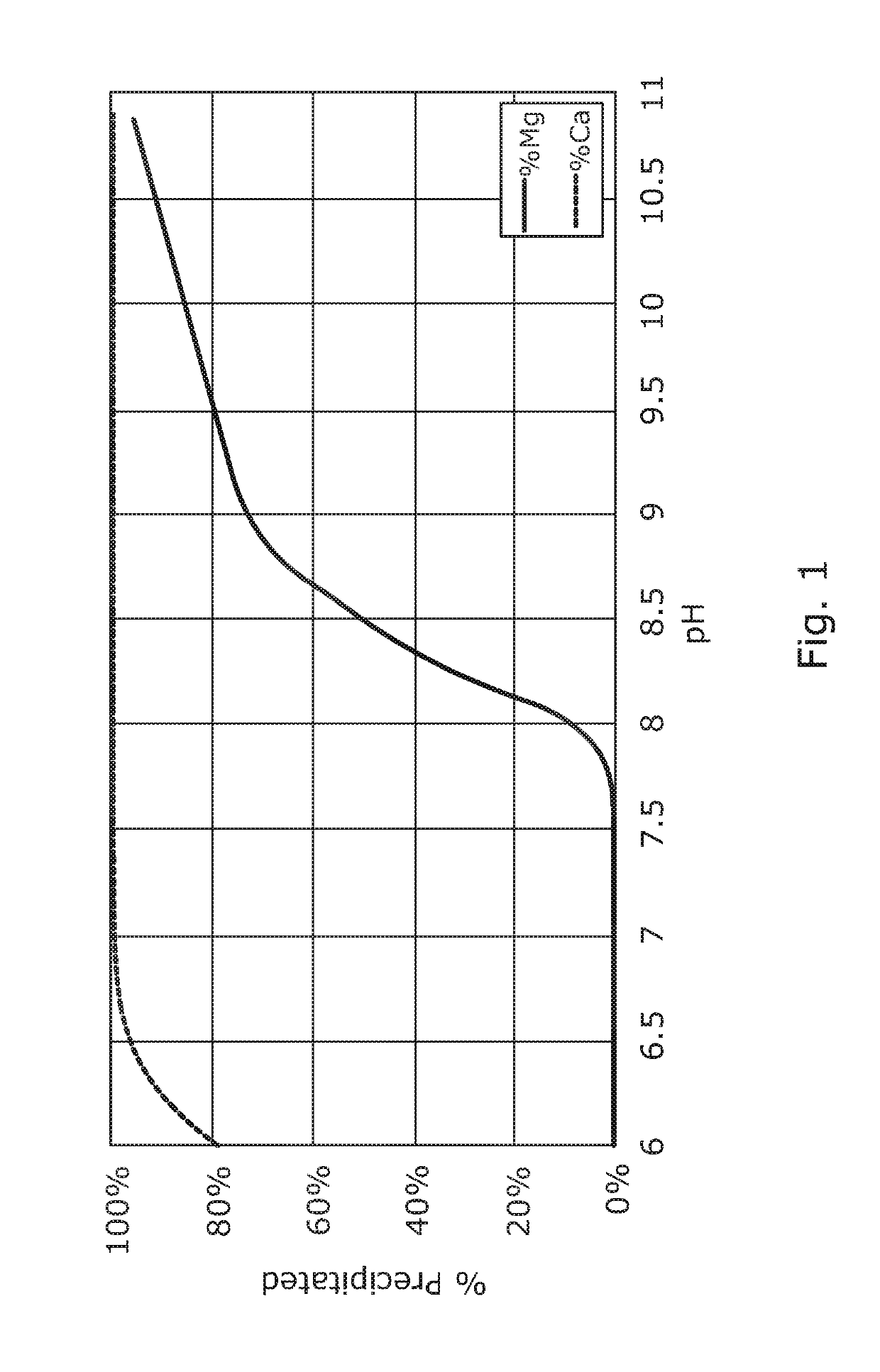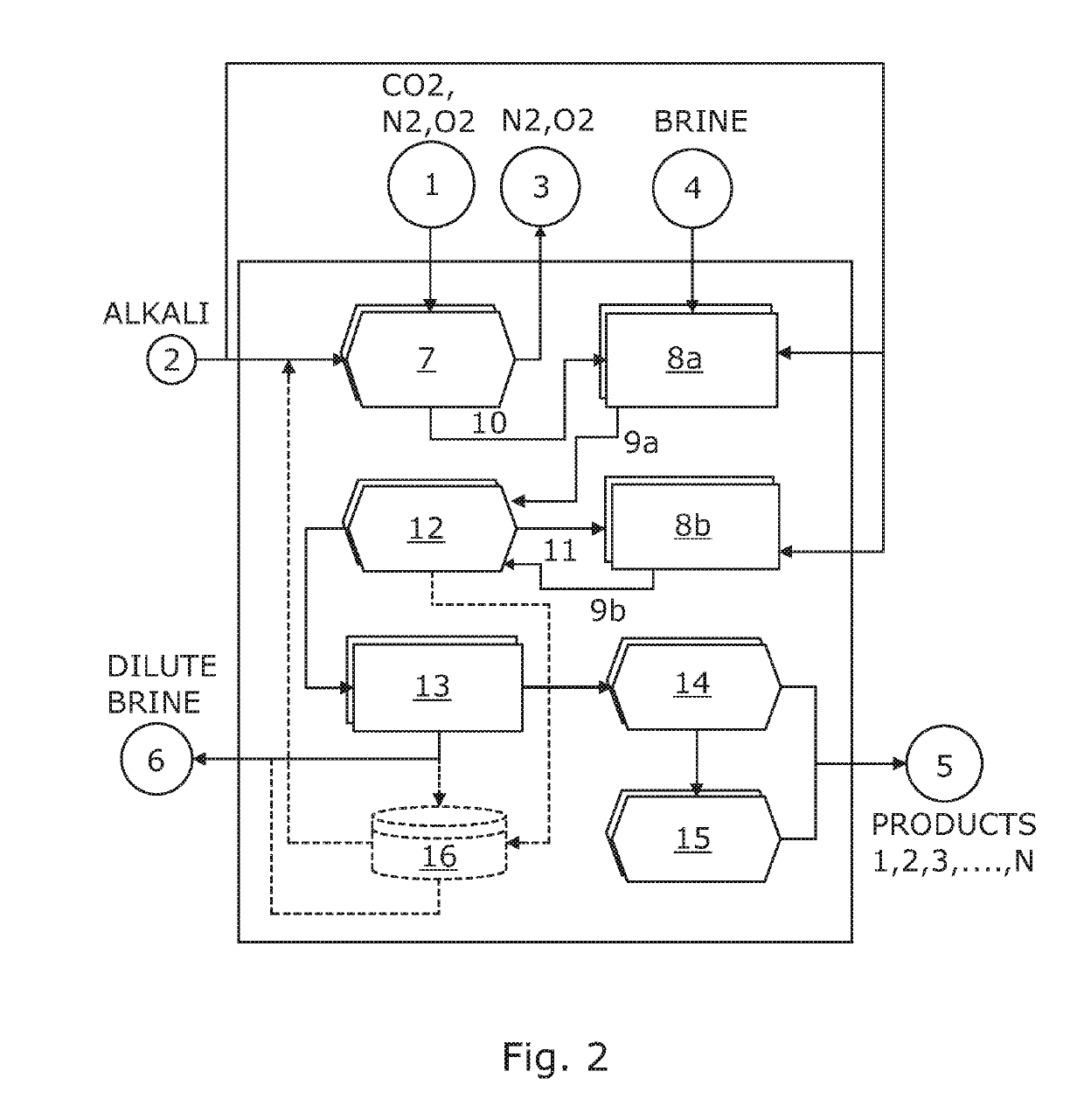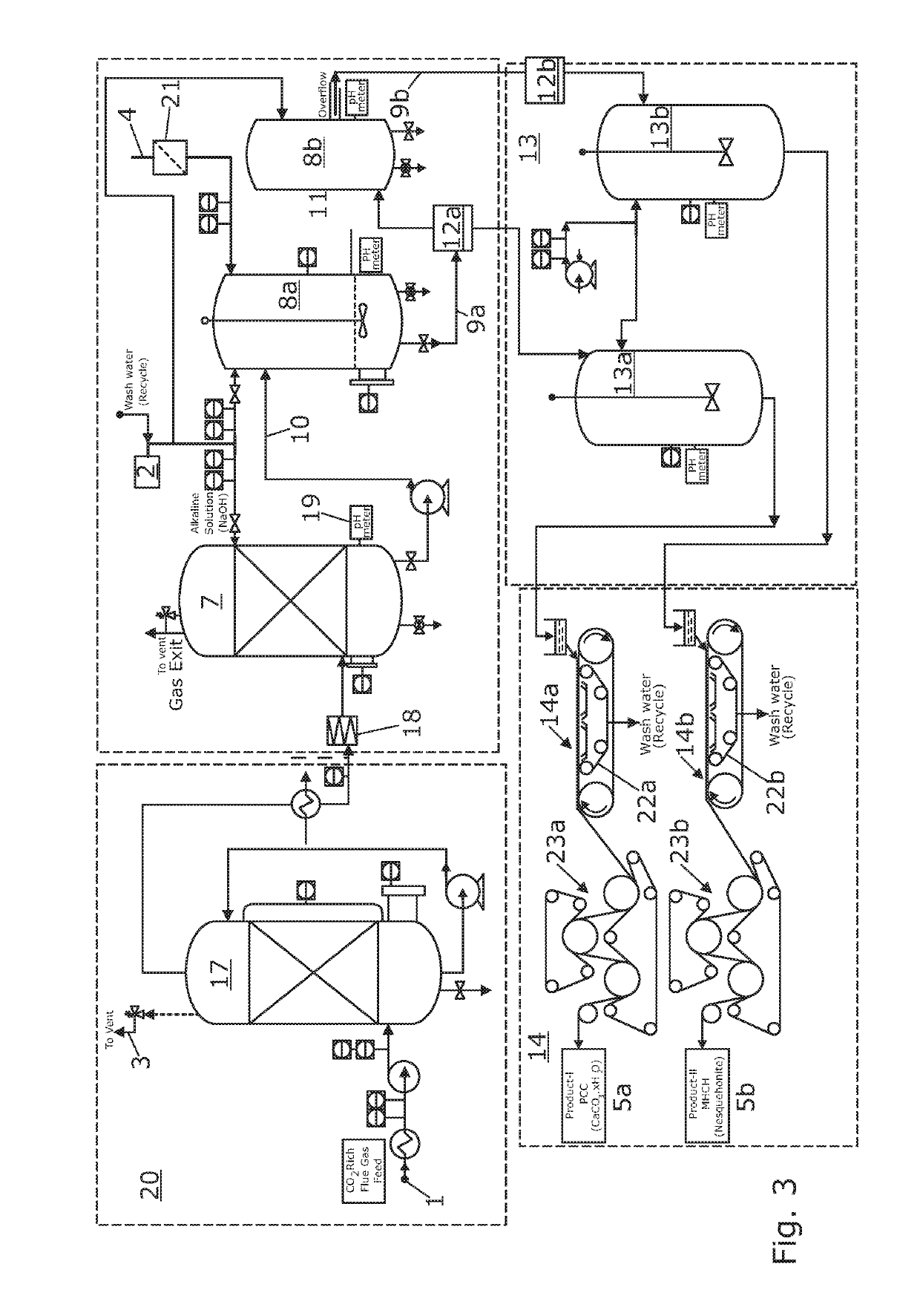Carbon Dioxide Capture And Conversion Methods And Systems
a carbon dioxide and conversion method technology, applied in the direction of liquefaction, lighting and heating apparatus, separation processes, etc., can solve the problems of releasing significant amounts of carbon dioxide into the atmosphere, a highly undesirable threat to numerous ecosystems, and calcination requiring considerable energy
- Summary
- Abstract
- Description
- Claims
- Application Information
AI Technical Summary
Benefits of technology
Problems solved by technology
Method used
Image
Examples
Embodiment Construction
[0106]FIG. 1 shows the theoretical yield of the precipitated first (calcium) product (PCC) and the precipitated second (magnesium) product (nesquehonite) at a temperature of 25° C. using a brine having a Ca2+Mg2+ ratio of 60,000:9,000 ppm and a NaCl concentration of 1.2 mol / L.
[0107]In a first precipitation step at a pH of <7.5, precipitation of substantially 100% of the PCC occurs with negligible precipitation of the nesquehonite. Accordingly, the PCC can be separated from the first (calcium ion-depleted) supernatant liquid.
[0108]In a second precipitation step carried out on the first supernatant liquid at a pH of >9.5, precipitation of ˜80% of the nesquehonite occurs. Any calcium salts have been previously precipitated in the first precipitation step resulting in the precipitation of substantially pure nesquehonite in the second step. The nesquehonite can be separated from the second supernatant liquid.
[0109]FIGS. 2 and 3 shows a schematic representation of systems according to a f...
PUM
| Property | Measurement | Unit |
|---|---|---|
| Temperature | aaaaa | aaaaa |
| Temperature | aaaaa | aaaaa |
| Temperature | aaaaa | aaaaa |
Abstract
Description
Claims
Application Information
 Login to View More
Login to View More - R&D
- Intellectual Property
- Life Sciences
- Materials
- Tech Scout
- Unparalleled Data Quality
- Higher Quality Content
- 60% Fewer Hallucinations
Browse by: Latest US Patents, China's latest patents, Technical Efficacy Thesaurus, Application Domain, Technology Topic, Popular Technical Reports.
© 2025 PatSnap. All rights reserved.Legal|Privacy policy|Modern Slavery Act Transparency Statement|Sitemap|About US| Contact US: help@patsnap.com



